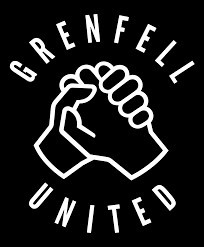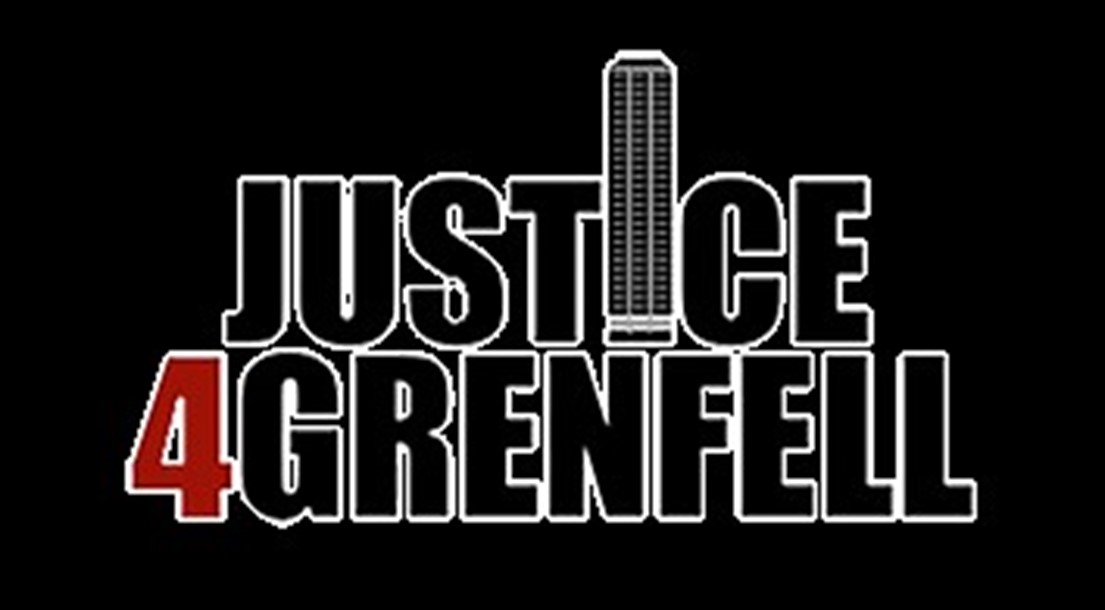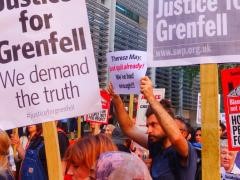Justice after Grenfell?
Seven years ago, on 14th June 2017, a fire broke out in Grenfell Tower, a 24-storey tower block on the Lancaster West estate in North Kensington, West London, a relatively poor and ethnically diverse area of social housing located in the richest Borough in England. 72 people were killed. The fire was not intended, but nor was it any accident - indeed, it was a site of state-corporate violence, produced by the actions and inactions of the Royal Borough of Kensington and Chelsea (RKBC) and the Kensington and Chelsea Tenants’ Management Organisation (KCTMO), a string of central Government decisions, along with a long list of private companies involved in the refurbishment, including the production and sale of fatally flammable cladding.
The tragedy was not just avoidable, but one which the bereaved, survivors and residents had in fact predicted. As Grenfell Tower was being refurbished in 2014-2016, a residents’ organisation – the Grenfell Action Group - raised repeated concerns about the lack of fire safety instructions, power surges, the single staircase egress in the event of a fire, along with the exposure of gas pipes within the flats as a result of the refurbishment. At 5am on the morning of the fire, as the Tower was still in flames, the Group wrote, “Regular readers of this blog will know that we have posted numerous warnings in recent years about the very poor fire safety standards at Grenfell Tower and elsewhere in RBKC. ALL OUR WARNINGS FELL ON DEAF EARS and we predicted that a catastrophe like this was inevitable and just a matter of time”.
Source: Grenfell United at https://www.grenfellunited.org.uk/
The starkest of these warnings had been published in November 2016, seven months before the fire, under the apocryphal but prescient headline ‘KCTMO – Playing with fire!’, which warned of “a catastrophic event” which would lay bare “the ineptitude and incompetence of our landlord, the KCTMO, and bring an end to the dangerous living conditions and neglect of health and safety legislation that they inflict upon their tenants and leaseholders”. It emphasised that “only an incident that results in serious loss of life of KCTMO residents” would expose the failings of the KCTMO and “how appallingly our landlord has ignored their responsibility to ensure the health and safety of their tenants and leaseholders. They can’t say that they haven’t been warned!”
They were warned. They knew. They did not listen. The richest council in England took a decision during the refurbishment design to replace a fire-resistant zinc cladding “with cheaper aluminium panels to save £293,368”. So, 72 people were killed and countless others had their lives detrimentally affected, forever, by a fire that was not just avoidable but which the bereaved, survivors and residents had in fact predicted. To repeat: “They can’t say that they haven’t been warned!”
What then? A public inquiry sat between 2018-2022, with its final report not due until this September, 2024. The Metropolitan police have reported that they are investigating possible charges of corporate manslaughter, likely implicating the Royal Borough of Kensington & Chelsea, the Kensington & Chelsea Tenants Management Organisation, Rydon as the lead contractor on refurbishment, and a series of other sub-contractors as well as private companies related to the cladding so tragically used on the Tower. By September 2023, 56 individuals – again, likely from the same organisations – have been questioned under caution for possible gross negligence manslaughter charges. A civil action against 14 organisations resulted in a £150m settlement for about 900 people in April 2023. If any criminal charges do follow, then they will not take place until 2027 at the earliest – ten years after the fire.
Source: Justice4Grenfell at https://justice4grenfell.org/
But whatever the outcomes of these legal processes – should they in fact follow – what does this mean for justice for the bereaved, survivors and residents? I cannot and would not claim to speak for those individuals and households of course. But I do have experience of working, directly or vicariously, with those bereaved by deaths at work and also those killed in the custody of the state. Overwhelmingly, a key demand of those so-affected are for the truth as to why their loved ones died – and it is a hope that the Grenfell Inquiry will formally acknowledge what many already know about the killings at Grenfell and how they could and should have been prevented. It follows that whatever recommendations ultimately emanate from the Grenfell Inquiry, these must be implemented – although sadly the fact is that such inquiries, not to mention a plethora of other official reports on avoidable deaths, are routinely ignored by powerful state and corporate bodies. It is precisely for this this reason that the charity INQUEST is leading a campaign for a National Oversight Mechanism to provide better learning, prevention, transparency and accountability for bereaved families following these and similar deaths. In this context, it is gruesome to note that had the coronial recommendations after the fire which killed six people at another tower block, Lakanal House, in South London in 2009, been implemented by government, then Grenfell may never have happened.
Image courtesy of Gerry Popplestone (Creative Commons)
But, then, whatever criminal justice may deliver in terms of corporate and individual prosecutions, an overwhelming demand of families affected by such tragedies is that other families do not experience similar, searing grief and loss, life-changing detrimental harms and life-long trauma. Historic, structural factors meant that the lives of those in Grenfell Tower counted for less than those of others in the richest Borough of England. Addressing such factors requires transformative not criminal justice: “a way of making things right” which do not rely on the state but “actively cultivate … safety for all” – that is, radical changes in the ways in which we organise our society, with a bottom line being a commitment to treating all people with respect and dignity, which also means listening and responding to them. The challenge then becomes, to paraphrase Mia Mingus, to determine ways – democratically – which do not merely address specific instances of violence, but transcend the oppressive relationships that allow these to happen. Grenfell surely highlights the need to “transform the conditions which help to create acts of violence or make them possible. Often this includes transforming harmful oppressive dynamics, our relationships to each other, and our communities at large.” Such outcome may provide some element of justice after Grenfell.
Steve Tombs, Emeritus Professor in Criminology, The Open University Steve.tombs@open.ac.uk
Thanks to Joe Sim for his as-ever helpful comments on a first draft of this blog.
This blog was also published by the Centre for the Study of Crime, Criminalisation and Social Exclusion and Liverpool John Moores University, at https://ccseljmu.wordpress.com/2024/06/13/justice-after-grenfell/



